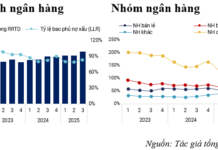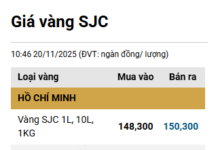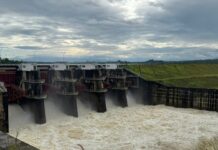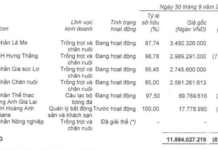The People’s Committee of Tuyen Quang Province has recently announced a comprehensive public asset inventory across the province, scheduled for January 1, 2026, at 00:00. This marks the first large-scale review following the province’s administrative restructuring and the implementation of a two-tier local government model. The inventory aims to standardize data, centralize management, and optimize the utilization of public assets during this new development phase.
According to the plan, the inventory will cover all government offices, land, machinery, official vehicles, commercial facilities, transportation infrastructure, irrigation systems, cultural and sports facilities, markets, industrial zones, economic zones, and other state-assigned assets managed by public service units or enterprises. All assets, whether in use, surplus, deteriorated, or underutilized, will be measured, valued, and recorded using a standardized template.

Tuyen Quang conducts a comprehensive public asset inventory post-merger.
The plan clearly outlines the responsibilities of each agency. The Department of Finance will lead the initiative, providing training, monitoring progress, and compiling reports for submission to the Provincial People’s Committee and the Ministry of Finance. Specialized departments will guide the inventory of assets within their respective domains: the Department of Construction for urban infrastructure and government offices; the Department of Transportation for roads; the Department of Agriculture and Rural Development for irrigation systems; the Department of Industry and Trade for industrial infrastructure; the Department of Culture, Sports, and Tourism for cultural and sports facilities; and the Management Board of Industrial and Economic Zones for their respective infrastructure. This decentralized approach ensures a practical, non-overlapping, and methodologically consistent inventory process.
At the local level, People’s Committees of communes, wards, and towns must establish Inventory Steering Committees by November 30, 2025. The inventory will be conducted from January 1, 2026, to March 31, 2026. Upon completion, each unit must submit a consolidated report to the Department of Finance by April 15, 2026, enabling the province to finalize the provincial report by May 31, 2026.
According to provincial leaders, the primary goal of this inventory is not merely to ensure accurate counts and valuations but to establish a comprehensive public asset database. This database will support state financial reporting, prevent losses and waste, and promote efficient asset utilization.
With a digitized and centralized asset management system, the province will be better equipped to plan infrastructure use, address surplus office space, develop land exploitation strategies, and repurpose underutilized assets.
“Contractor Blames Lô River Bridge Collapse on Flooding, Offers to Fund Repairs Twice”
UDIDECO, a leading contractor, has proactively offered to repair all damages to the Sông Lô Bridge using its own funds, committing to a lifetime warranty for the province of Phú Thọ throughout the bridge’s operational lifespan. Notably, the contractor attributes the current bridge deterioration to “heavy rainfall and flooding.” As of now, the company’s website is inaccessible.
New Provincial Land Registry Office Proposal
The Ho Chi Minh City Institute of Natural Resources and Environment Economics recommends maintaining the current land registration office model without any changes.
Deputy Prime Minister Pham Thi Thanh Tra Outlines Roadmap for Wage Reform
Vice Prime Minister Phạm Thị Thanh Trà announced that the Government is developing a comprehensive plan for wage policy reform. The Central Committee’s Policy and Strategy Department will lead the re-evaluation of Resolution 27, with a report to be submitted to the Central Committee in the first quarter of 2026.
Urban Administrative Unit Classification and City Standards
The government, alongside relevant ministries and sectors, is actively exploring mechanisms to redeploy and strengthen personnel from provincial levels to grassroots units, ensuring a more robust and responsive administrative framework.












































